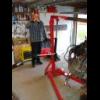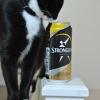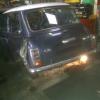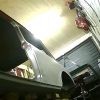Edited by Daz1968, 21 October 2013 - 08:58 PM.
Butt Welding Issues
#16

Posted 21 October 2013 - 08:57 PM
#17

Posted 21 October 2013 - 08:58 PM
Is that gasless or gas? 0.8 is probably a bit big really, some people do prefer it but generally 0.6 is better
Don't aim the wire towards the gap, try and get it on either the top or the bottom and then fill the gap, so aim at the top and then flick the weld down
)))))))))
Kind of like the pattern above.
its gas, argon and CO2 mix. I see what you mean, just go on the edge of the panel first and then help the weld into the gap....good idea!
#18

Posted 21 October 2013 - 09:00 PM
As above that should weld easily, just practice on some scrap first. Best method is to tack it in position every inch or so then slowly join the tacks together. Not sure what angle car is at but it will be easier with the car positioned so panel being welded is flat. Also try arcing on the one panel then dragging across the gap, don't try to start in the gap. Difficult to explain really as not everyone welds the same. I have used both 0.8 and 0.6 wire but 0.6 is easier as it uses less current to melt
yea I think I was aiming at the gap first and realised that did work. I will practice on some scrap tomorrow and report back. Thanks
#19

Posted 21 October 2013 - 09:01 PM
If you've got a small welder then the 0.8 wire won't be helping you.
If/when you change to 0.6 don't forget to change the welding tips and the drive wheel on the wire feed unit.
#20

Posted 21 October 2013 - 09:03 PM
If you do use the pulse method then as said tack miss an inch and so on. Then go back to your first tack and pulse weld on top of that one and keep going to the next tack. Then jump an inch and do the same again.
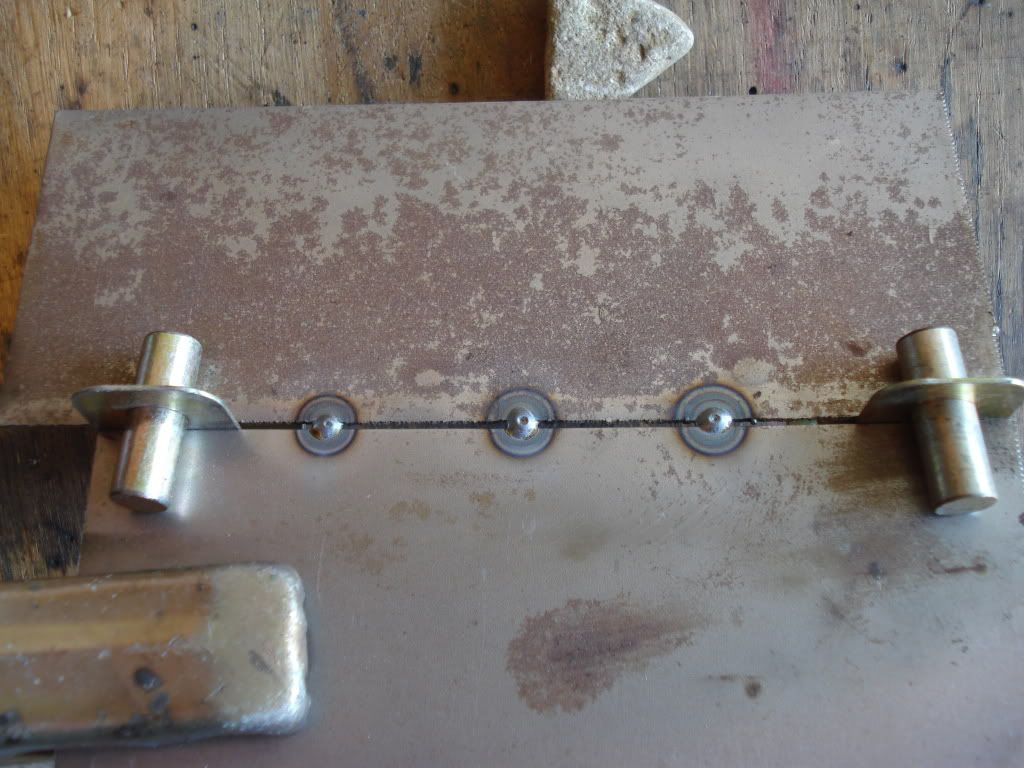
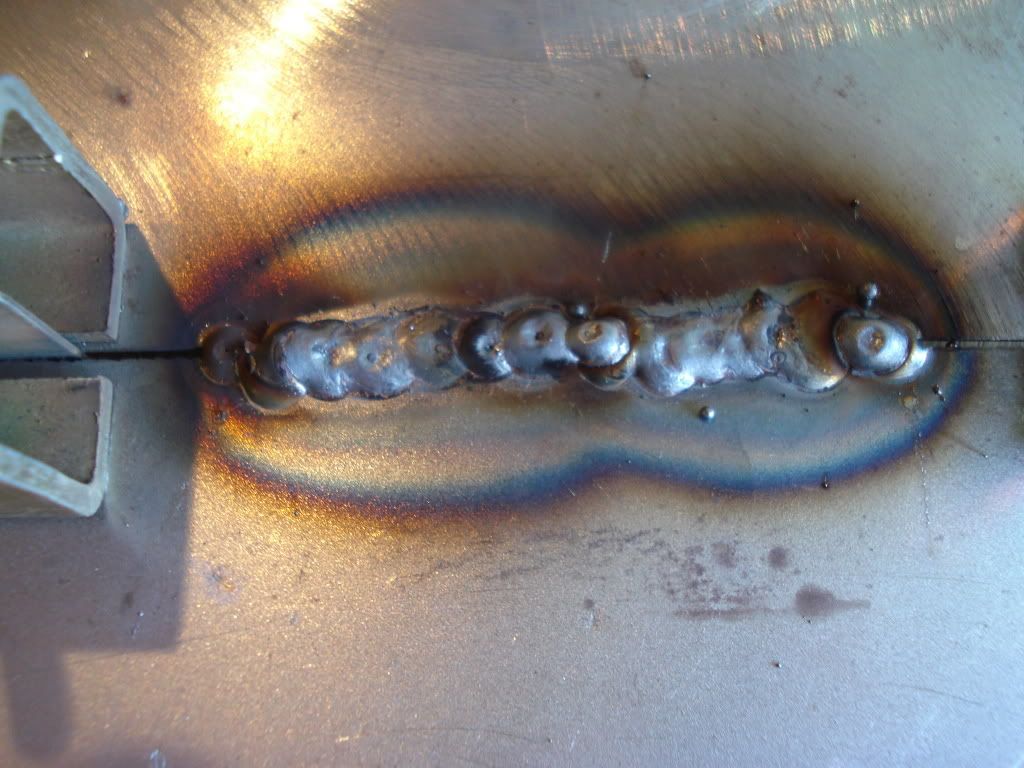
doing it neatly you should get this
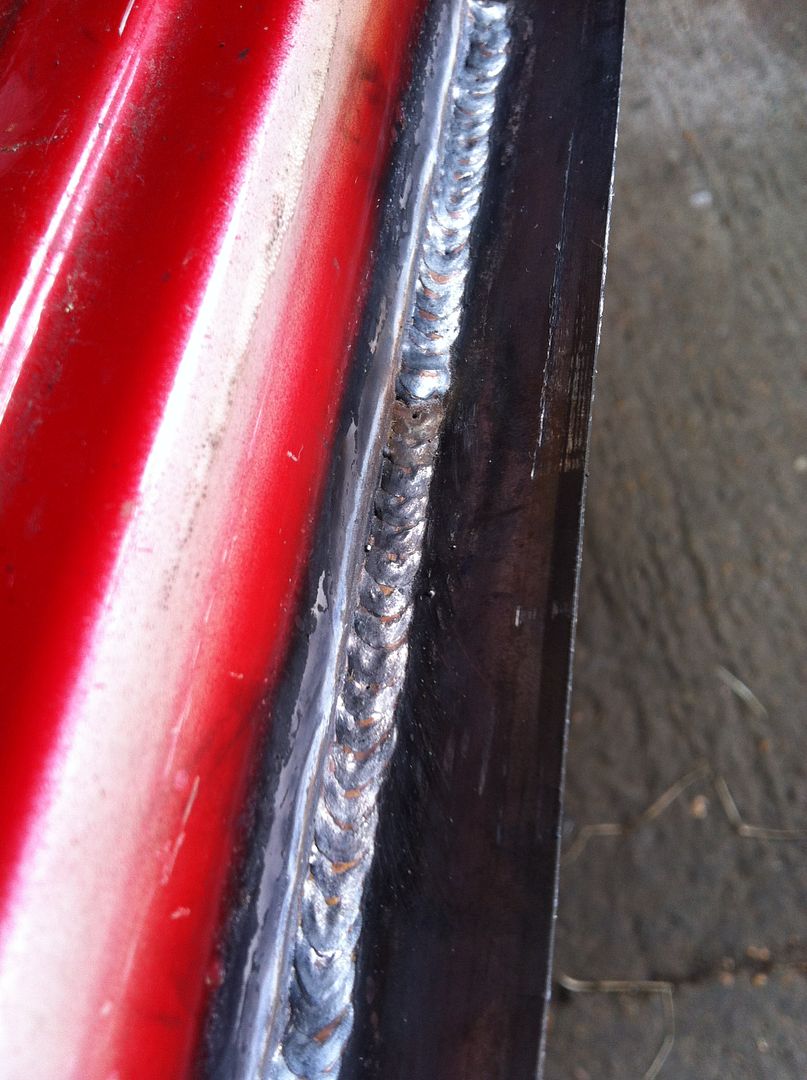
There was a gap between the bottom of the door and the new flange.
#21

Posted 21 October 2013 - 09:12 PM
I have a clarke 151Te which I think is a fairly decent sized welder?
Sonik - thanks for that, you have also used intergrips and so I am convinced it can be done. I will give it a shot. Fingers crossed ![]()
#22

Posted 21 October 2013 - 09:15 PM
I have a clarke 151Te which I think is a fairly decent sized welder?
Sonik - thanks for that, you have also used intergrips and so I am convinced it can be done. I will give it a shot. Fingers crossed
Slowly slowly!
My welding improved massively when I started concentrating on what I was doing
#23

Posted 21 October 2013 - 09:19 PM
no you dont need alot of practice, just keep cracking on with it mate it will take you few goes and don't be scared blowing holes in your mini you can correct most of the things!
#24

Posted 21 October 2013 - 09:19 PM
I also struggled with this type of weld joint to start with on thin sheet, but once you know the correct way to do it, and practise ALOT, it becomes a lot easier :)
As this is about butt welds, can I slip in a on topic ish question? Is it acceptable to use a butt weld for example, when fitting new floor complete floor pans, and butt weld the floor pan to centre tunnel. I am questioning strengh I guess, in comparisome to a lap joint ?
#25

Posted 21 October 2013 - 09:20 PM
Try your power switch to Min and the rotary selector to 2 wire speed 7 with the 0.6mm wire.
#26

Posted 21 October 2013 - 09:22 PM
Try your power switch to Min and the rotary selector to 2 wire speed 7 with the 0.6mm wire.
ok cheers for that will give it a shot ![]()
#27

Posted 21 October 2013 - 09:24 PM
That's some damn neat tacking sonikk.
I also struggled with this type of weld joint to start with on thin sheet, but once you know the correct way to do it, and practise ALOT, it becomes a lot easier :)
As this is about butt welds, can I slip in a on topic ish question? Is it acceptable to use a butt weld for example, when fitting new floor complete floor pans, and butt weld the floor pan to centre tunnel. I am questioning strengh I guess, in comparisome to a lap joint ?
It all depends on how confident you are with your welding ability. I always butt weld purely as the finished result is smooth when ground down, however a lap joint if welded both sides will be stronger if do not want to grind down both sides. the same applies to a butt joint. If you don't want a perfectly smooth finish then do not fully grind the weld flush.
#28

Posted 21 October 2013 - 09:29 PM
#29

Posted 21 October 2013 - 09:33 PM
When you change to 0.6 make sure liner in good condition as it doesn't feed as easily as 0.8, I ended up replacing my liner as it was causing judder on start up even with new rollers and tip. You need a good consistent feed when welding thin material.
just out of curiosity, what would cause a liner to fail?
#30

Posted 21 October 2013 - 09:33 PM
That's some damn neat tacking sonikk.
I also struggled with this type of weld joint to start with on thin sheet, but once you know the correct way to do it, and practise ALOT, it becomes a lot easier :)
As this is about butt welds, can I slip in a on topic ish question? Is it acceptable to use a butt weld for example, when fitting new floor complete floor pans, and butt weld the floor pan to centre tunnel. I am questioning strengh I guess, in comparisome to a lap joint ?
It all depends on how confident you are with your welding ability. I always butt weld purely as the finished result is smooth when ground down, however a lap joint if welded both sides will be stronger if do not want to grind down both sides. the same applies to a butt joint. If you don't want a perfectly smooth finish then do not fully grind the weld flush.
Thank you, that is what I thought, but needed it clarifying, from some one that knows !
Sorry op for slight hijack x
1 user(s) are reading this topic
0 members, 1 guests, 0 anonymous users



